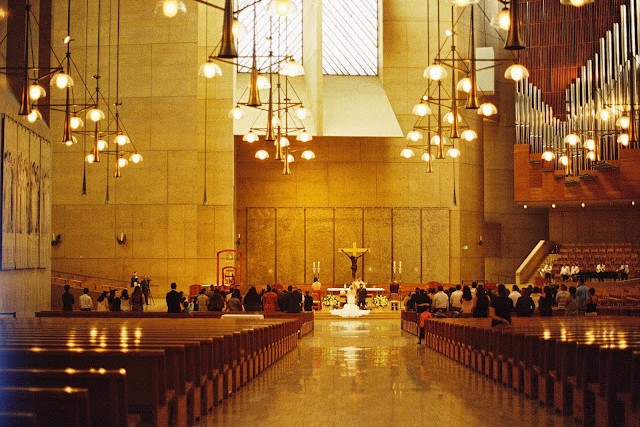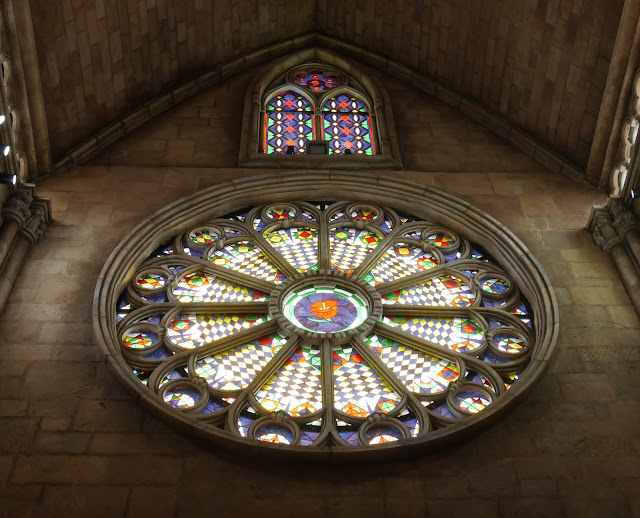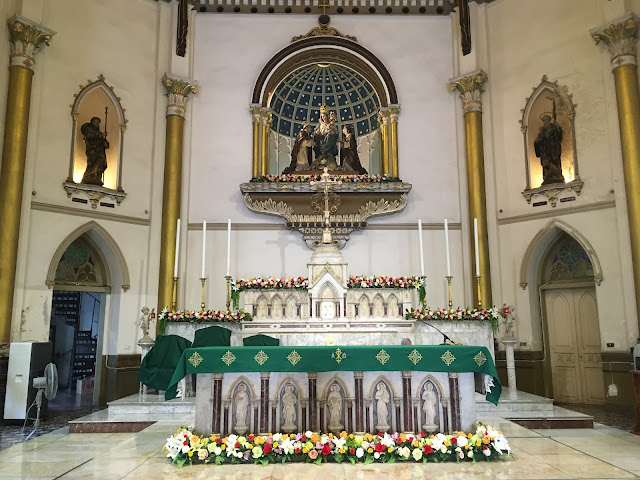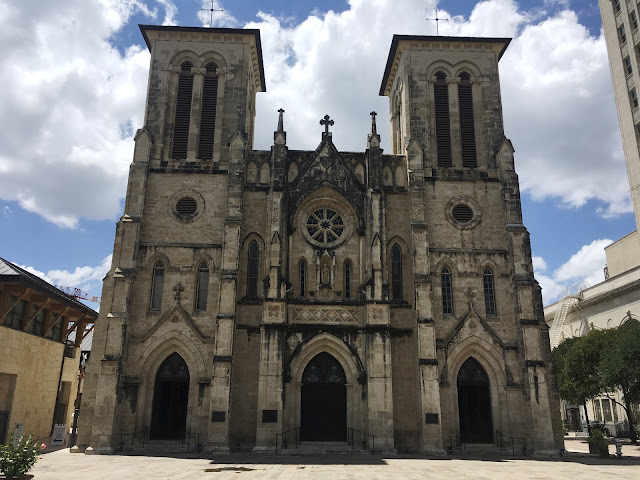The Cathedral of Our Lady of Angels, Los Angeles, California
Author: Kyle Desrosiers
 |
| The view of the sanctuary from the Narthex. From a wedding Mass, 2017. |
The Los Angeles metropolitan area is one of the most Catholic–and also most religious diverse–places in the United States. The Roman Catholic diocese, home to the Cathedral of Our Lady of Angels, holds more than five million members. At the heart of downtown Los Angeles stands the uniquely modernist and deconstructivist architectural wonder of the diocesan mother church of 287 parish churches. This unique building, built and dedicated around the turn of the 21st century is where the Archbishops celebrates the major Liturgies of the year alongside the community.
 |
| External view of the Cathedral. Indicative to its deconstructivist style and postmodernist school, the building is asymmetrical, monumental, and builds a juxtaposition of unity in disunity. |
Though I visited the cathedral on a short trip to Southern California in 2017, it was only this past fall that I got my rolls of film developed and was reminded again just how much I love this church. (Some of these photos were taken on 35mm, others with my iPhone).
This church is constructed in the spirit of some of my favorite sacred buildings, and in my judgement, its architect, Rafael Moneo, was successful in a marriage of reverence and innovation. The Cathedral both presents a beautiful post-modern work with clean lines, asymmetry, light, windows a-sconce, and minimal ornamentation–and also–preserves a spirit of reverence through the rich tapestries of saints on its walls, monumental proportions in its sanctuary, and intentionally placed strong lines and windows, which direct a visitor's line of sight toward the altar where the holy Mass is celebrated.
 |
| Shrine to Our Lady of Guadeloupe. |
The Cathedral honors the Blessed Mother under the patronal title of "Our Lady of Angels", was built after the original diocesan Cathedral Church of St. Vibiana was destroyed in an earthquake. It is no secret that its design is the subject of controversy (Google this at your own risk and find wasteful and disparaging blogposts). For me, and for many, this Cathedral is beautiful and sacred. In a way similar to other innovative designs of a post-conciliar Church, the building uses light, proportions, and most importantly, contemporary artistic collaboration, in order to allow the people to participate in the celebration of the Liturgy and connect spiritually in a new way. A global church needs modernist Cathedrals and gothic Cathedrals, just as it needs to give space for distinct and local Liturgical traditions in different places, in order to teach different and parallel lessons.
Above all, I love the shrine to the Virgin of Guadeloupe, patron of the Americas and the tapestry images of Bible narratives and Saints. They, alongside the altar, are minimalist, yet obviously lavish and thoughtful objects which show reverence and devotion as they meet contemporary creativity. New schools of design, especially when it comes to the sacred, often invite criticism and dislike. Yet, they also invite awe and wonder, allowing visitors to contemplate holiness and imagine how the Church might develop and discern its role in uniting and healing in this world more deeply in this century. This was certainly my impression.
 |
| Clean lines and monumental simplicity direct the visitor's line of sight directly to sacred spaces. |
 |
| The inside of the church is filled with beautiful contemporary tapestries. In this case, the Baptism of Christ is depicted. |
It was an extremely hot day when I visited in 2017. Coming inside, the Cathedral was cool and quiet. Stepping into the sanctuary, I realized that I had crashed a wedding Mass. The Liturgy was said in Spanish, and I lingered at the peripheries of the Church, looking at the tapestries while I listened. The well-attended celebration of Sacraments in the middle of the day on the weekday is no doubt a good indication of the life and vibrancy of this community in a cathedral whose design invites people in to come and experience spirituality and faith in a new way.
This philosophy is no doubt one which the Catholic Archdiocese of Los Angeles strives for. Indeed, it is unique, as it is growing in a nation where many others are shrinking. Its bishop and clergy are well-known for their participation in advocacy for immigrants and for the movement for racial equality in the United States. It is a diocese whose largest growing constituency is Mexican-American, followed by Salvadoran, Guatemalan, and Filipino –Americans. In Los Angeles, a city of immigration in a nation of immigration, it is a striking choice of the diocese to built such an original and architecturally creative modern cathedral. It tells a message of optimism for development and innovation for the Church as it strives to continually better serve its people and the broader community.
 |
| The view of the Crucifix from behind the altar, from the website of the Archdiocese of L.A. |
It is no less poignant than that this Cathedral is consecrated to the Blessed Mother, who often appears on its art in the representation of Our Lady of Guadeloupe, a spiritual and artistic synthesis of Indigenous and Spanish symbols. She is not only of great significance to many Latin American faithful, but also significant for her embodiment of the message that across all ages, faith is continually being rediscovered, handed down, and presented in new and creative ways. The bold innovation of artists like Moneo remind us of this.
 |
| The Cathedral house holy relics and centuries-old works of arts amidst its modern design. This holds a relic from the cloak of the Virgin of Guadeloupe. Credit: Andreas Praefcke, Wikipedia. |


.JPG)


Comments
Post a Comment